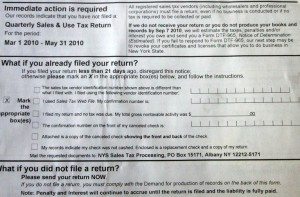 Taxpayers are required to pay quarterly estimated tax payments if the money withheld from the income will not be sufficient to pay your tax liability at the end of the year.
Taxpayers are required to pay quarterly estimated tax payments if the money withheld from the income will not be sufficient to pay your tax liability at the end of the year.
This usually includes most self-employed individuals, landlords, and investors.
Currently, you must only pay estimated taxes if you expect to owe $1,000 or more in taxes on top of any withholdings AND your total withholdings plus or tax credits are only 90% of the total tax you expect to pay at the end of the year.
So how much do you have to pay and when?…
When To Pay Quarterly Taxes
The IRS sets up 4 deadlines each year for quarterly estimated payments which are typically around 3 months apart.
For the 1st year you have to file quarterly taxes, you can print payment vouchers off the IRS website or you can send the payment with quarterly payment noted in the memo lines. However, after your 1st year of filing quarterly taxes, the IRS will send you vouchers with the stated deadlines each year.
So the tricky part is knowing how much to pay.
How Much To Pay
The easy way to calculate your quarterly payment is to take the total amount of tax you paid last year and subtract any expected withholdings. The balance is the annual amount you should pay in quarterly taxes. So, since there are 4 payments, divide the balance by 4 and your quarterly tax payment is calculated.
Example:
Tax owed from last year: $5,000
Withholdings: $3,000
Total additional tax owed: $2,000
Quarterly tax payment = $500
It’s as easy as that.
One last thing to consider: If your income has gone up since the previous year, you may want to add a little more to your payments so you don’t end up with a huge tax bill at the end of the year.
So, what would happen if you miss a payment or do not pay quarterly taxes (and you need to)?
Well, you get charged a penalty of approximately 10% come tax time in April. The IRS wants to ensure they get all their money and by making you pay quarterly payments, they are more likely to get it.



